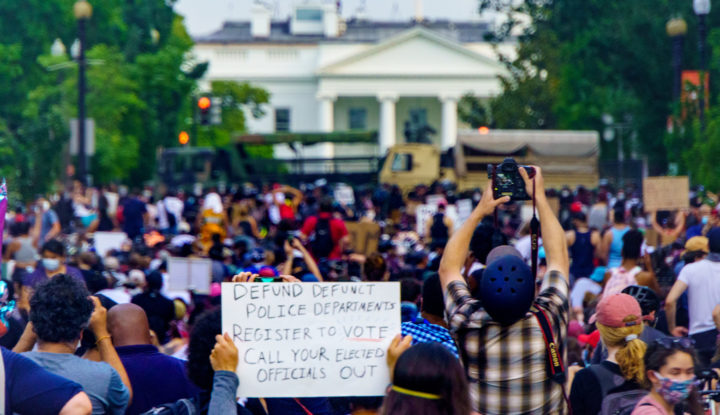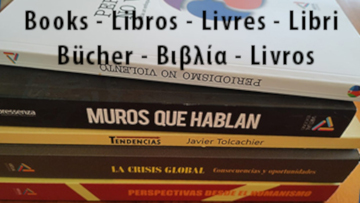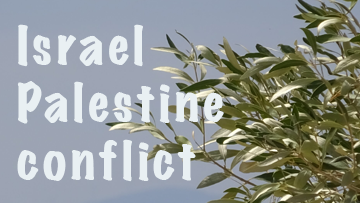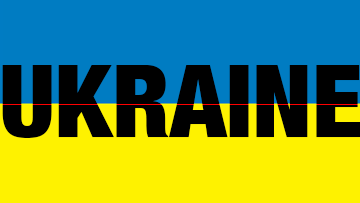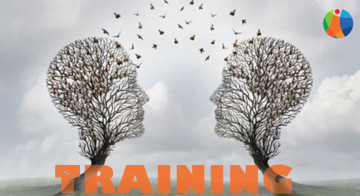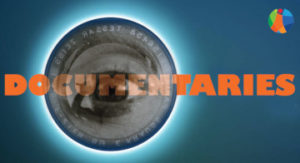Taking “movement moments” to change, from the Red Summer to Black Lives Matter.
By Collective 20
It is said that Mark Twain once quipped that “history does not repeat itself, but it rhymes.” These days one cannot escape comparisons with 1968, and with widespread civil unrest, troops in our cities’ streets and at war abroad and a rabidly reactionary Republican presidential candidate (this time an incumbent president) executing his own Southern Strategy replete with dog-whistle appeals to “law and order,” such comparisons are not without merit.
However there is another year that “rhymes” better with 2020, and almost literally so. It’s 1919, when pandemic, recession, rising inequality, some of the worst racial violence ever experienced in the United States and even a long-forgotten war all raged in what became known as the Red Summer. Like 1968, 1919 was one big “movement moment” and as in ’68, the turbulence of 1919 bore fruit both poisonous and promising, from the rise of the surveillance state to a great awakening of black consciousness that ultimately gave rise to the modern civil rights movement.
As we take to the streets and take action in the wake of police and white supremacist killings of George Floyd, Ahmaud Arbery, Breonna Taylor, Tony McDade, Manuel Ellis, Maurice Gordon and too many other men, women and children to list here, how do activists harness the too-often fleeting momentum from “movement moments” to create historic social change? What lessons can 1919 teach us as we enter our own Roaring Twenties? Collective 20 sat down for a (virtual) discussion with activists around the world, some of them C20 members and others from elsewhere in the firmament of movement-minded humans.
But before we look to the future, let’s take a (relatively) brief look back at a past that rhymes with our present.
A Most Turbulent Transition
As 1919 began, the blood of what was then the deadliest war in human history was still drying in the trenches of Europe. U.S. troops returning from the Great War helped fuel a third wave of the “Spanish” influenza pandemic, which ultimately killed some 675,000 Americans and at least 50 million people around the world. As with the COVID-19 pandemic, some U.S. cities and towns in 1918-19 saw what was coming and saved countless lives through social distancing lockdowns, while others scoffed at such measures and paid a heavy price. Meanwhile, returning black troops, basking in the novel glory of both wartime victory and being treated like equal human beings for their first time in France, looked expectantly forward to change, or at least dignity, at home.
The end of wartime production and the influx of homebound troops in the U.S., the unprecedented devastation and hyperinflation in Europe and the global pandemic all contributed to a brief but very sharp economic recession in 1918-1919, a prelude to the much more severe depression of 1920-21. Hard times and hard truths—including 12-hour workdays, 6-day workweeks, stagnant wages and a high level of income inequality—fueled ever-burning labor unrest until it exploded in a series of historic strikes. Millions of working men, women and children took part in the Seattle General Strike, the Great Steel Strike, Coal Strike and countless other actions big and small from coast to coast. Many of these strikes and demonstrations were brutally repressed.
Labor uprisings were often intimately connected with political struggle. The year’s—and arguably the century’s—landmark achievement to that point, women’s suffrage, took a huge final step toward hard-won reality with congressional passage of the 19th Amendment in June. 1919 was also a year of tremendous political violence, and of state repression of dissent and the rise of the surveillance state. The trial, conviction and imprisonment of Industrial Workers of the World (IWW) co-founder and five-time socialist presidential candidate Eugene V. Debs for opposing World War I sparked the May Day riots, which coincided with the first of two waves of anarchist bombings targeting dozens of government officials, politicians, news editors and businessmen.
Red Scare
All of this occurred amid the dramatic backdrop of civil war in Russia, in which ascendant Reds and doomed Whites fought fiercely for the future of their country. The latter were boosted by tens of thousands of troops from capitalist countries—including the United States—who invaded the far north and far east of Russia in a campaign that was as ill-fated as it is forgotten. Elsewhere, U.S. troops were occupying Haiti and the Dominican Republic and deployed to Honduras, Turkey, Panama, Cuba and Dalmatia. After the Mexican revolutionary commander Pancho Villa captured Ciudad Juárez just south of El Paso, black soldiers were dispatched across the Rio Grande to chase his army out. Marine Corps general and two-time Congressional Medal of Honor awardee Smedley Butler would later chronicle, and condemn, some of these same imperial adventures in his famous “War Is a Racket” book and speaking tour.
Mexican revolutionaries may have been alarming, but it was the Reds who really struck terror in the hearts of so many Americans. The Bolsheviks were winning in Russia and the specter of communism’s spread to these shores caused irrational hysteria. This, combined with the appointment of A. Mitchell Palmer as attorney general in March, gave rise to the first Red Scare and the Palmer Raids, led by a 24-year-old Bureau of Investigation zealot named J. Edgar Hoover. A massive, often brutal and always unconstitutional roundup of radicals followed. Thousands of immigrants were arrested. With more than 20 million newcomers arriving in the United States between 1880 and 1920, the only people many Americans feared more than radicals were foreigners. Prominent Americans including the industrialist Henry Ford and the eugenicist Madison Grant railed against immigrants, especially Jews.
On December 21, 1919, nearly 250 immigrants, including the radical feminist author and activist Emma Goldman, were unceremoniously forced aboard a ship dubbed the “Soviet Ark” by capitalist newspapers and deported to Russia. Donald Trump surely would have approved. Many of the deportees were Jews, and 1919 was also the year in which Adolf Hitler delivered his first major speech, a fake news-filled tirade in which he branded Jews as the “enemy of the people,” just months after Mussolini created the Partito Nazionale Fascista in Italy. Fascism was not yet creeping, but it was certainly learning to crawl and take its first frightening steps.
Red Summer
It was a dangerous time to be a radical, as the Palmer-Hoover crackdown, the imprisonment of Debs and the socialist anti-war activist Charles Schenck and the general anti-left hysteria demonstrated. However, 1919 was an even more dangerous time to be black, for it was the year of the Red Summer. With all due deference and apologies to civil rights activist James Weldon Johnson, who coined the term while working as an NAACP field secretary, Red Summer is actually quite a misnomer, for there were racist attacks and unrest in every month of that blood-soaked year. It wasn’t just lynchings and mob murder in the Deep South, either. Black people were violently attacked in most every corner of the nation, from big northern cities like New York, Chicago, Philadelphia, Baltimore, and Washington, to smaller cities including Omaha, Rochester and Scranton, to far-flung small towns like New London, Connecticut, and Bisbee, Arizona. The Great Migration, in which millions of Southern blacks pulled up roots and relocated to less oppressive but still dangerous cities of the industrial North, further fueled racial and labor tensions in their adopted communities.
Just as today’s blaring blowhards at Breitbart and Fox News rail against the non-existent “threat” posed by Black Lives Matter, in 1919 big city newspapers like the New York Times spread fear and distrust of blacks, attacking revered civil rights leaders including W.E.B. Du Bois as “militants” under the influence of “Bolshevist propaganda.” Meanwhile, a vibrant black press, including the venerable Chicago Defender, raised black consciousness—and outrage—with unflinchingly graphic reportingof each new attack, from backwoods Southern lynchings to mob murders of men, women, children and babies in broad daylight on the streets of the nation’s biggest cities.
The worst of the Red Summer bloodshed happened, of course, in the South. In what was quite possibly the deadliest single eruption of racial violence in the history of the United States, at least 100 and possibly as many as 237 black men, women and children were massacred by an officially sanctioned white mob at Elaine, Arkansas. More than 500 U.S. soldiers led by Col. Issac Jencks, a World War I veteran, burned homes with families inside, machine-gunned fleeing residents and tortured some captured blacks. None of the white murderers ever faced justice. Twelve black sharecroppers, known as the Elaine 12, were found guilty of murder by all-white juries and sentenced to death by electrocution. They were represented by the formidable black jurist Scipio Africanus Jones, and their appeals made it all the way to the United States Supreme Court. More about that shortly.
Striking Similarities
Comparing 1919 to 2020 falters upon arrival at the fact that at least hundreds of people died during the violence of 101 years ago. The modern concept of human rights, formed and forged from lessons learned over the course of the bloodiest century in human history, has made the country a less brutal, if still gratuitously violent, place today. Workers no longer take their lives into their hands when they go on strike, although they don’t strike nearly enough and their actual workplaces are still too often a different story. The same goes for civil rights protesters, although the risk to life and limb remains very real, even for innocent bystanders like journalists. At time of writing, the number of people killed during the current unrest can be counted on one hand. That’s still too many, but it is no Red Summer 2.0. May it remain that way.
But the similarities are striking enough, starting right at the top with the two most racist presidents of modern times, Woodrow Wilson and Donald Trump, one an admirer of, the other admired by the Ku Klux Klan, bothfond of rolling back civil rights. Robert Whitaker, author of On the Laps of Gods: The Red Summer of 1919 and the Struggle for Justice That Remade a Nation, told C20 that in the broadest sense, “there was a feeling that the country was falling apart in 1919, and that it’s falling apart now.” Whitaker cites “labor unrest, inequality before the law, unjust Supreme Court decisions, black disenfranchisement, lack of educational opportunities, concentration of wealth in the hands of a few and the trampling of democratic values” as some of the similarities between then and now.
Montague Simmons, a St. Louis community organizer and human rights activist who rose to prominence during the Ferguson uprising in the wake of the police murder of unarmed black teenager Michael Brown Jr., told C20 that like today’s Movement for Black Lives, black Americans in 1919 “were in action in ways we hadn’t seen before.” Empowerment—whether it be black soldiers returning from World War I with pride and a strong sense that a different world was possible, or black people today feeling emboldened and uplifted by the wave of protest and intersectional solidarity—is the key. “Like then, I think we could very well be on a trajectory for something different,” added Simmons.
Whitaker sees other similarities between 1919 and today, like newspapers’ scapegoating of “reds” and anarchists in 1919 to Trump and the right-wing media vilifying Black Lives Matter and Antifa today. This pernicious practice “avoids having to address problems like racial discrimination or economic inequality,” he says. “You just paint them as traitors and enemies of America. That’s why you don’t hear that police brutality or social inequality or lack of health care are the problems, you hear that socialism or Antifa are the problem. You hear that Black Lives Matter is the problem, that they’re the real threat to the American way of life. And that’s just a way to make people afraid of them and to avoid the real issues.”
From Movement to Power
But check outside your window, or on your Twitter feed, and you’ll see what happens when we try to avoid the real issues. The activists out there in the streets around the globe and organizing what’s next in all the movements fighting for a better world know that it takes a lot more than protest to dismantle structures of oppression. It is necessary to put people in power who will take the step from lip service to the service of justice. “The lack of political will of elected officials who have the power to transform has really been one of the most frustrating parts of the struggle,” Simmons confessed, singling out Democrats who “claim to be progressive while they protect the very institutions that prevent any real transformative change.”
It is especially important, and impactful, to support movement candidates for state and local offices, which can often affect our lives as much as Washington does. Jackie Fielder, a queer Native American and Latinx organizer who is running for California state senate, began her journey from movement to power as a water protector fighting the Dakota Access Pipeline at Standing Rock. To Fielder, “politics, movement organizing and culture are not mutually exclusive.” She told C20 that “culture moves policy and it’s actually rarely the case that politicians lead us to a better future. All the ideas I am proposing as a candidate—including single-payer health care, a Green New Deal, $20 minimum wage, and so on—originated in the struggles of social movements.”
Seeing the connections between capitalism and oppression during her #NoDAPL days, Fielder returned to the Bay Area and went to work. “I started a hyper-local movement to divest San Francisco’s $11 billion budget from the banks financing the pipeline, private prisons and weapons manufacturers and instead re-invest in what we actually need,” she said, listing “affordable housing, renewable energy and public infrastructure” among her top priorities. For Fielder, action took the form of the fight for a public bank, “to get us to the point where we are not using Wall Street banks, and where we are stimulating our local economy.”
Fielder strongly believes in the power of state legislatures to achieve meaningful, movement-driven change. “They make laws regarding minimum wage, criminal justice reform, police budgets, education budgets and Medicare and Medicaid,” she said. “They are best positioned to bring about the future we need.”
From Setback to Success
Of course, not all progressive candidates or causes win the day. But short-term setbacks, whether they are in the political or movement space, don’t mean that we’re failing. “We are always challenged by the dynamics between being involved in very specific and immediate struggles on the one hand, and long-term, visionary, strategic planning on the other,” said lifelong peace, social justice and climate change organizer Leslie Cagan, a C20 member. “The challenge is how to bring the most power to bear so as to actually make a change in people’s lives while at the same time be thinking about long-term vision and goals.”
Setbacks can bring change. Israel, for example, may have brutally thwarted the Gaza Freedom Flotilla’s mission to deliver desperately needed humanitarian aid to the people of war-torn and perpetually besieged Gaza, killing 10 activists and violently arresting many others. But Huwaida Arraf, the Palestinian-American civil rights lawyer who co-founded the International Solidarity Movement (ISM) and who was one of the flotilla leaders, told C20 that the ill-fated mission “gave a boost to the Boycott, Divestment and Sanctions (BDS) movement.” It really “put the violence of Israel’s policies on display in a way that had usually been obscured by Israel’s massive public relations machine,” she said.
“We saw a rise in the number of artists, academics and others who canceled their scheduled appearances in Israel and who spoke out against Israeli [crimes],” Arraf added. “We’re seeing, especially in the United States, more politicians willing to speak out in ways that were unfathomable before.”
Yes, there was tremendous death, terror and oppression during the Red Summer. But there was also tremendous hope, and game-changing progress. It is no coincidence that the 1920s were a decade of elevated black consciousness, expressed in ways as diverse as the Harlem Renaissance to the burgeoning civil rights movement to more just Supreme Court Rulings. Remember the Elaine 12? In 1923 the high court ruled in Moore v. Dempsey, one of the 20th century’s most important cases, that the defendants’ racist and mob-dominated trials deprived them of their right to due process enshrined—but too often ignored—in the Fourteenth Amendment. “Thus, the court began 40 years of decisions that gradually led to rulings meant to make criminal proceedings fairer, the end of segregated schools and the securing of voting rights,” explained Whitaker.
White minds were changing too. The events of 1919 represented “a moment that switched the national consciousness as many whites realized that things were changing and that the extreme violence by which they had for so long ruled would no longer go unanswered,” said Whitaker. Of course, the post-1919 transformation didn’t mean an end to racist oppression—witness the horror of Tulsa, 1921, to name but one of countless subsequent crimes—but it did mean that black people were more determined than ever to achieve what America had long promised them but was still failing to deliver.
The current crisis is also a catalyst for changing hearts and minds. Ideas that were not so long ago considered taboo or laughable impossibilities—reparations and defunding or even disbanding police departments, for example—are seriously discussed (and more) today. We must strike while the proverbial iron is hot, while the nation is still paying attention. “Both the pandemic and police brutality have ripped off the mythical masks to reveal in sharp relief the living legacies of slavery, colonialism and imperialism,” said C20 member Don Rojas, who formerly served as press secretary for the murdered revolutionary Grenadian prime minister Maurice Bishop, and as editor-in-chief of the Free West Indian. “Now, more than ever, reparations demands must be high on the agenda of transformations to make black people whole and to repair the damages done to them by the historical crimes of slavery and segregation.”
Solidarity—Now, More Than Ever
During these uncertain times, persistence and solidarity are more important than ever. Both abound during the current uprising, but we must guard against what Frederick Douglass called “the natural tendency of the human mind to weary of an old story, and to turn away from chronic abuses for which it sees no remedy.” C20 member and Z Magazine founder Michael Albert warns of the need to move “beyond momentary passion” toward “sustained resistance and positive rebellion.” Instead of always going “back to business as usual,” Albert asserts that we must fight for “change that struggles on and on” until business as usual “becomes so unusual, so rare and so repugnant that its only natural evolution is to waste away upon the rotting heap of the aggregate barbarism of the ages.”
“We have yet to fully understand the power and meaning of solidarity,” asserts Cagan. “There is an opportunity in this crisis for genuine partnership and solidarity. We should seek collaboration at every turn during the pandemic and get into the habit so whenever this pandemic is in our rearview mirror we can move forward grounded in these new relationships. Reach out to the groups who are currently organizing. Have conversations about how these issues are connected. Join their efforts, without an expectation that they will then automatically join yours. The point is to put solidarity into practice.”
This can come in many forms, from rallies, marches and civil disobedience to creative resistance, which Brazilian filmmaker and activist Iara Lee, another Gaza Freedom Flotilla member and founder of the Cultures of Resistance Network, describes as “using all the skills you have at your disposal” to effect change. “Activists aren’t going to use bombs, we’re going to use cameras, poetry, music, our art, and I think these really touch the heart,” Lee told C20. “Just one song, poem or photo can really reach people.” Lee added that being a witness is important for those “willing to put their bodies in the streets, or in my case, on a ship to Gaza,” where “I had a camera in the right place at the right time.”
“When the whole world can see, the whole world can revolt,” she said.
“None of us is fighting alone,” added Arraf. “People are taking the power back into their own hands and recognizing the importance of building connections, because we know it’s the same systems of oppression that are keeping us down.” At first glance, Black Lives Matter, Amazon warehouse workers, reproductive rights advocates and climate activists might not seem to have much in common. But all are fighting the same systems of oppression, and as those systems sow the seeds of their own destruction with every fresh crime they commit, real hope emerges. Whitaker believes that “there is a very good chance that we come out of this a better nation.”
“I think we really are on a trajectory for something different,” concurs Simmons. “People are being politicized and transformed in ways that I don’t know I’ve ever seen before. The coming years are going to be beautiful. They may be painful, but this is the beautiful struggle, and what we’re seeing right now is something that I’m not even sure we had the imagination for until this moment.”
This article was produced by the Independent Media Institute.
Collective 20 is a group of anti-capitalist, feminist, anti-racist, environmental activists and writers from around the world who provide analysis, vision, and strategy for positive social change.


